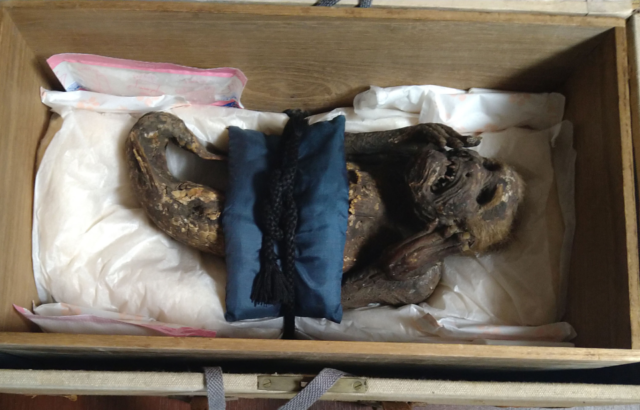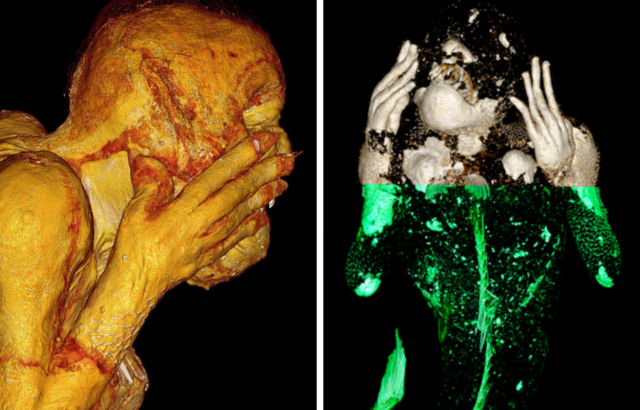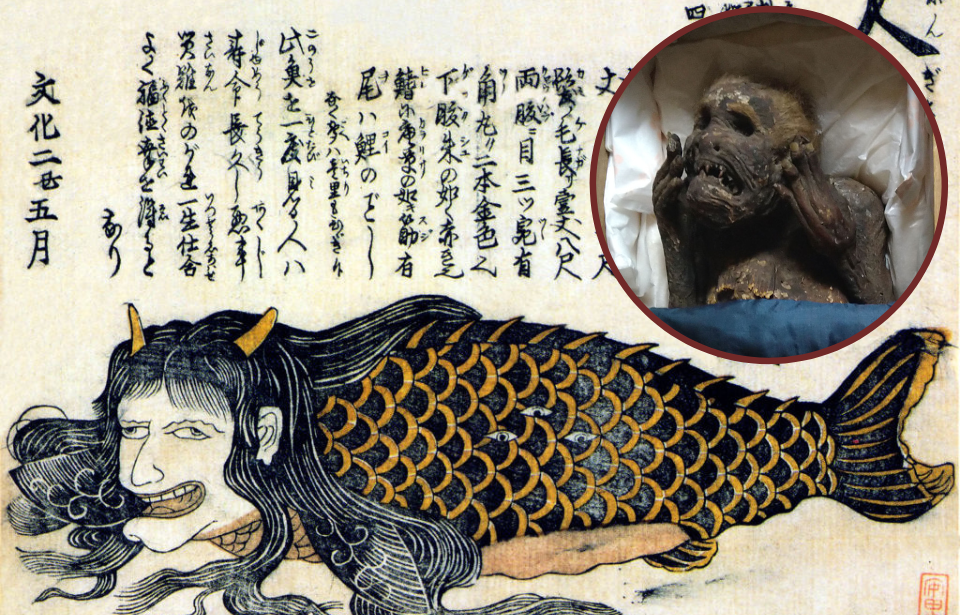The secrets of a mysterious mummified mermaid that has baffled researchers for decades have finally been revealed. One of 13 other “mermaids,” the mummy dates back to the 1700s when it was used by priests of Japan’s Enjuin temple as a healing talisman. After 40 years in a fireproof safe, the mermaid was thoroughly examined by researchers who made an astonishing discovery.
The bizarre story of the 18th-century miracle mermaid
No one knows exactly when the mummy with the head of a human and the body of a fish came to be, but it has long been stored in a box with a memo that says it was caught in a fishing net off the coast of Kochi, Japan between 1736 and 1740. It was then brought to Osaka and was sold to the ancestor of Mr. Naojo Kojima, a member of the Bingo Fukuyama clan during the Edo period. The mermaid became a Kojima family heirloom until eventually, it ended up in the hands of the Enjuin temple.

At the temple, the mermaid was stored in a safe to keep it in good condition, but recently the 12-inch-long mummy was taken out of storage to be studied by scientists. The investigation began on February 2, 2022 at the Kurashiki University of Science and the Arts (KUSA) and involved X-rays, CT scans, microscopic observations, DNA analysis, and radiocarbon dating to determine the true origins of the mummy.
What is the mummy really made of?
In a statement, the researchers concluded that the “teeth are all conical and the tips are slightly curved backward (inside the mouth). The jaw of a carnivorous fish of unknown species.” The body of the creature was painted with sand or charcoal powder and has arms “with five fingers and flat claws… The lower body has dorsal fins, [rear] fins, and caudal fins, and is covered with scales.” Carbon dating revealed the mummy was crafted around 1800, and not 1700 as was previously thought.

Researchers concluded that the “fish body” of the specimen was made of cloth, paper, and cotton while “pufferfish skin is used on the arms, shoulders, neck, and cheeks.” The hair on the body comes from some kind of mammal, and animal keratin was used for the nails, but the exact DNA of the creature “could not be detected.” This isn’t the only mermaid, either – in fact, there are another 12 similar specimens.
While European depictions of mermaids typically feature a beautiful woman with long hair and a long, fish-like tail, Japanese mermaids, or ningyo (which translates to “human fish”), appear much more fish-like. In Japanese folklore, the ningyo have shiny golden scales, a monkey’s mouth, and a voice that resembles a flute. “Japanese mermaids have a legend of immortality,” Hiroshi Kinoshita of the Okayama Folklore Society told Metro. “It is said that if you eat the flesh of a mermaid, you will never die. There is a legend in many parts of Japan that a woman accidentally ate the flesh of a mermaid and lived for 800 years.”
More from us: What is ‘Mermaiding’? The Water-Ful History Behind the Social Media Trend
It’s no wonder that the priests at the Enjuin temple believe the mummy has healing powers. Some at the Enjuin temple worshipped the mummy in hopes it would bring an end to the Coronavirus pandemic. But, bringing it back to the question that started it all: is the mermaid mummy a hoax? Scientists have concluded that the mythical creature with healing powers is definitely a fabrication and not naturally occurring.
